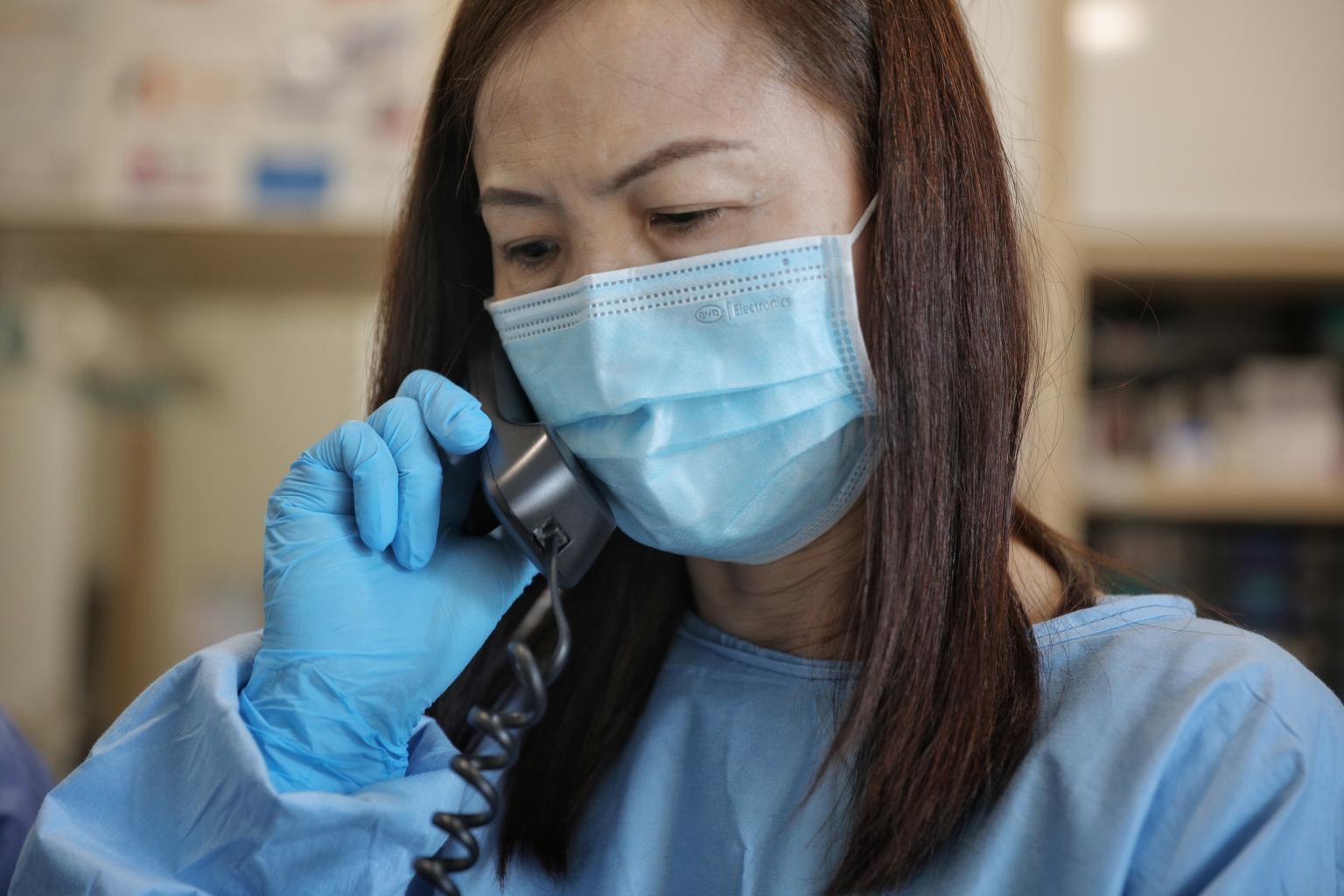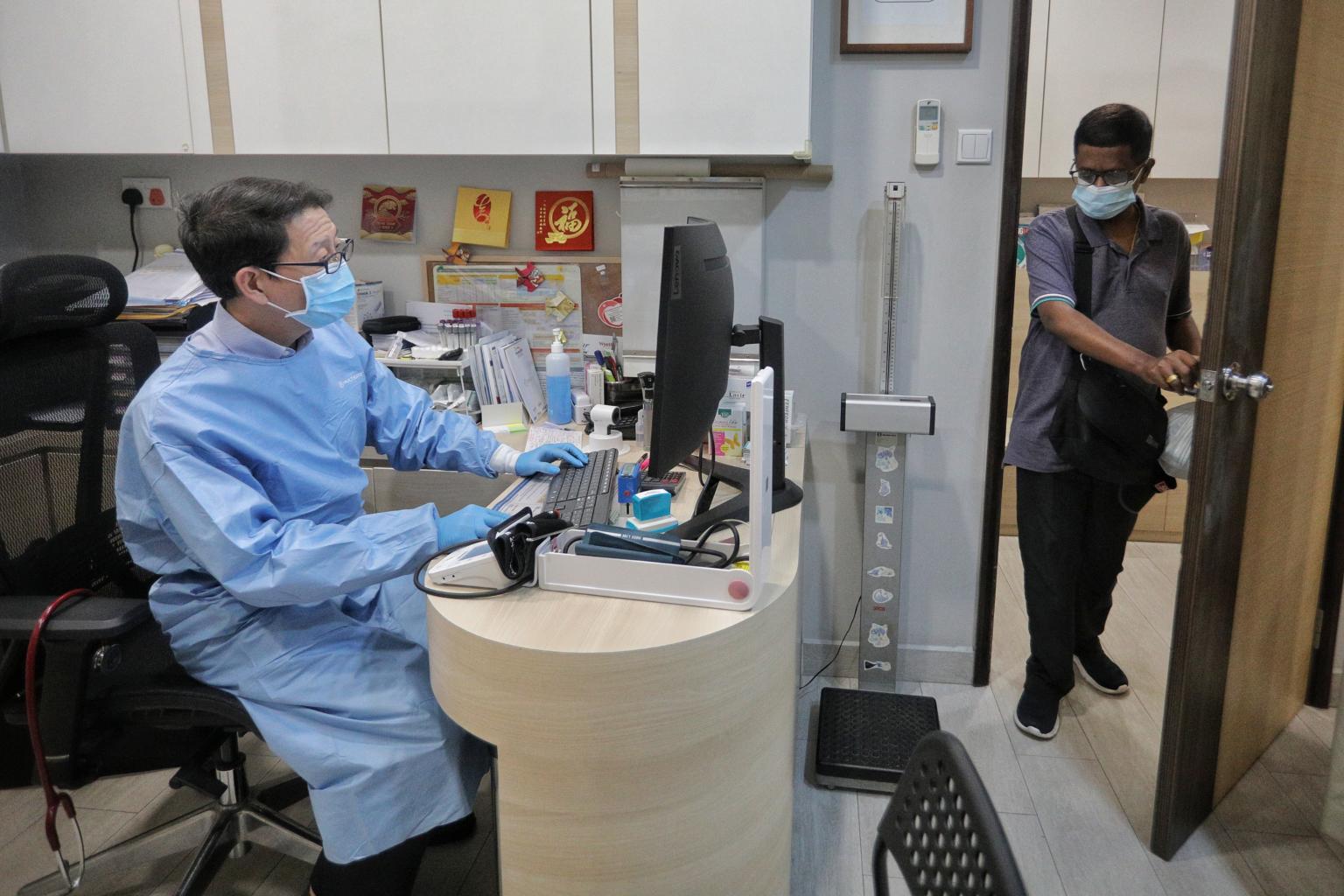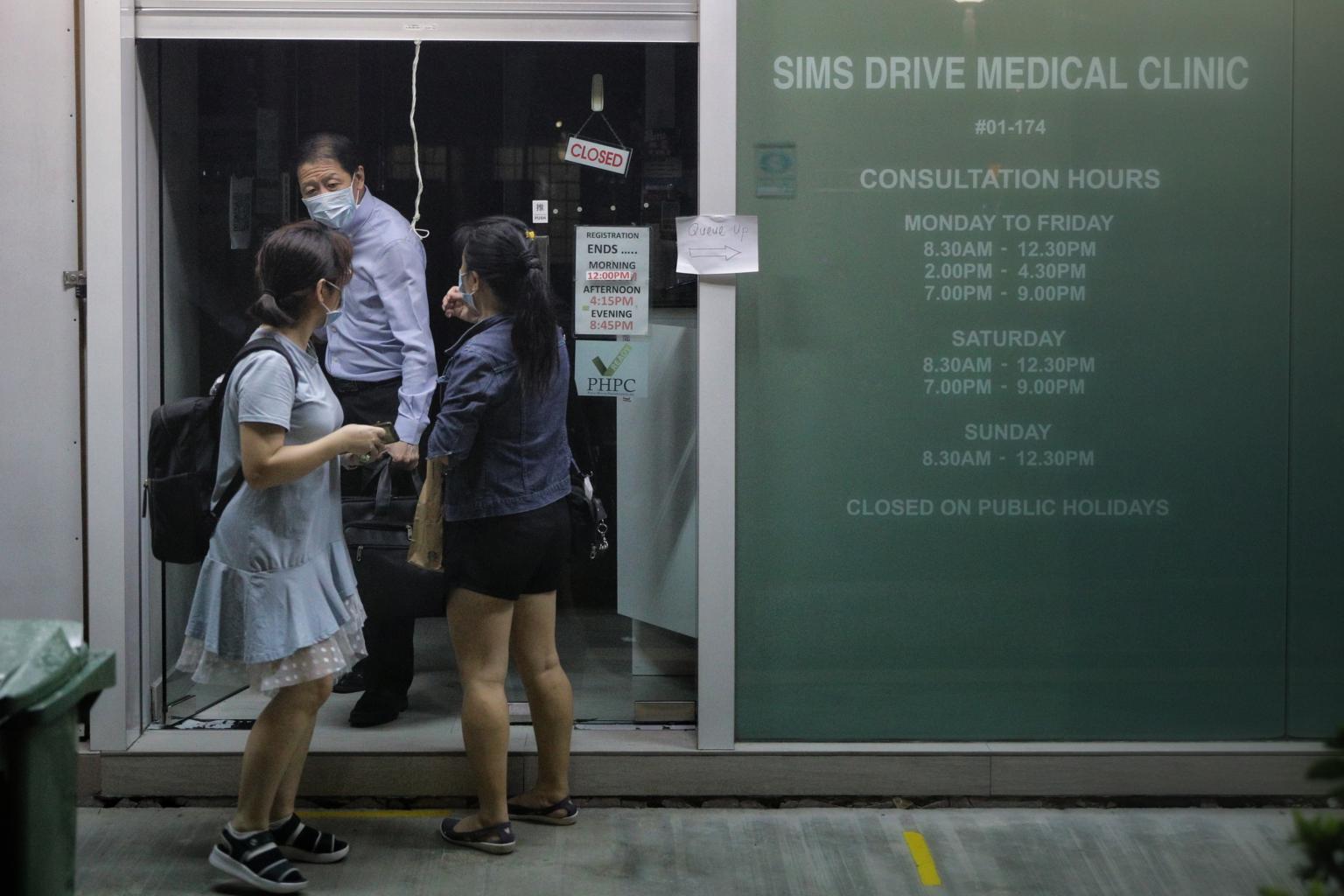'It's intense': A day in the life of a GP during the Omicron surge in Singapore


SINGAPORE - The recent surge in Covid-19 cases, driven by the Omicron variant, has resulted in long queues at general practitioner (GP) clinics.
The Straits Times spent 14 hours at a Public Health Preparedness Clinic (PHPC) - which provides subsidised treatment and medication for those with respiratory symptoms - to see what the situation is like for staff there.
It is 8am on Wednesday (March 2) and the shutters are still down at Sims Drive Medical Clinic, which is not due to open for another half hour.
But a construction supervisor who wanted to be known only as Mr Wong, 61, is already sitting on the kerb outside, waiting to see the doctor for his high blood pressure.
Located in the middle of an HDB estate, the clinic, which has been serving the neighbourhood for the last 22 years, is sandwiched between a hairdressing salon and a cafe.
"There's always a long queue here, many patients, so I decided to come earlier," Mr Wong, a Malaysian, says in Mandarin.
Over the next half hour, he is joined by another nine like-minded people, who have all arrived early to beat the queue.
The line extends past the clinic, and across the shopfront of the eatery next door, but the scene is calm, with most patients quietly using their phones.
Behind the shutters, however, there is a flurry of activity as a team of three clinic assistants prepare the clinic for the day ahead.
At 8.30am, the shutters go up with a loud clanking, and patients slowly but steadily stream in.
By 8.33am, the first suspected Covid-19 patient - Ms Astar Tan - registers, and is told to wait outside.
The 31-year-old researcher had a sore throat and cough and tested positive with a self-administered antigen rapid test (ART) the night before.
"On (the Health Ministry's website), I saw that if I'm feeling well and test positive, I can just rest at home. But because I have a cough and sore throat, I want to see the doctor for medication," says Ms Tan, adding that she wanted to get a medical certificate (MC), and that the clinic was closer to her home than a Quick Test Centre.

The authorities have said on several occasions that MCs are not necessary for Covid-19 patients, but some people have said they still feel compelled to get one for various reasons.
Over the rest of the morning, another 35 suspected Covid-19 patients will visit the clinic. Each suspected case is told to wait outside for the safety of other patients, and most sit at a nearby open-air common area, which doubles as a makeshift waiting room.

But this means that when the time comes for them to see the doctor, the busy clinic assistants - voices already muffled by two layers of masks and a face shield - have to come out and shout out their names, straining to make themselves heard over the noise of traffic on the road and the HDB estate.
At any time, there are five to 10 patients waiting outside, while another five wait in the clinic. Some other patients enter, take a number and then head off to run errands while waiting, and are nowhere to be found when their number is called.

Some of the Covid-19 patients with mild symptoms tell ST they want to get an MC, or seek the doctor's advice as he is "more reliable".
At noon, clinic assistant Sindy Chong flips the sign on the door to "closed", but there are still about eight patients waiting to see the doctor.
The sign does not stop some people from trying to walk in for an appointment anyway. A few middle-aged men are turned away, but an elderly lady is allowed to register due to her old age, Ms Chong explains.

The last patient is finally cleared by 12.50pm, 20 minutes after the clinic is scheduled to close. The staff then need to disinfect the clinic and prepare for the afternoon session, which begins at 2pm.
"It's considered manageable - not as busy as Saturdays and Mondays," says Ms Chong, who has not had time to drink water or use the restroom all morning.
For the staff, lunch is a takeaway meal eaten in about 10 to 15 minutes in the clinic, as they need to quickly begin preparing for the next shift.
Dr Lim Chien Chuan requests that we take a break before his interview.
"I'm exhausted. My mind is a blank," says the veteran doctor of nearly 30 years, who grabs a quick bite at a nearby eatery.

He later explains: "It's very intense. When I'm working, there's always pressure for time because there are patients who are waiting and getting impatient, but we also have to try to balance it with giving the best care that we can."
At 2pm, the shutters go up again, letting in three patients who are already waiting outside.

Aside from dispensing medicine, registering and swabbing patients, and other duties, clinic staff also need to field a stream of calls from people who have Covid-19.
Clinic assistant Caren Manahan estimates that the clinic gets about eight to 10 such calls an hour.
"We get many of them calling us, saying they have Covid-19 and don't know what to do. So we have to explain and guide them," she says.

This afternoon, the crowd is thinner than usual, possibly due to a heavy thunderstorm keeping people away, and the session ends only five minutes later than scheduled at 4.35pm, to the visible delight of the staff.
"This is rare - we usually finish around 5 or 5.30," says Ms Manahan.

But for Dr Lim, the day is far from over.
He and clinic assistant Chai Lee Thing, will soon need to return for the night shift, which will start at 7pm, so he rushes home to have a quick dinner and see his wife and two sons. Another clinic assistant, a part-timer, will join them.
By 6.45pm, a queue of eight people has already formed outside the clinic, and the process begins again.
Tonight's patients include 33-year-old housewife Jeane Lee, whose three-year-old daughter tested positive and has a fever.
"I'm worried she's unwell and uncomfortable and doesn't know how to tell me, and I can't tell because I'm not a doctor... I wanted to make sure she's okay," says Ms Lee, who has to wait over an hour to see the doctor.
Not everyone is as patient. A woman who comes to ask Dr Lim to interpret her mother's blood test results decides to leave after a 45-minute wait, as she feels it is taking too long.

At 9.40pm, the last patient for the day - a man with runny nose and cough - finally sees Dr Lim after a 1 hour and 15 minute wait.
All in, Dr Lim has seen about 80 patients - up from the pre-surge number of about 50 to 60 - of whom about 50 have symptoms of acute respiratory infection.
"I'm glad it's over, and I can go back and sleep, and prepare for tomorrow," he says, tiredness showing in his eyes.

Dr Lim says he does not begrudge Covid-19 patients who visit his clinic despite having only mild symptoms, even though this adds to his workload.
He explains that some tested negative but have symptoms and are trying to be socially responsible, while others are at a loss as to what to do next, or how to protect their babies or the elderly at home from their illness.
"If I put myself in their position, I'd probably do the same too," he says.

Despite the already heavy workload it is seeing, Sims Drive Medical Clinic earlier answered the Government's call for PHPCs to extend their operating hours and ease the pressure on the healthcare system.
For the past two weekends, it has operated additional hours from 2pm to 5pm on Saturday and Sunday afternoons.
Dr Lim says this was a "very difficult decision", but explains: "We know that a single clinic opening extended hours will not create a dent (on high case numbers). But if the whole GP community, all of us, can step forward, I think it'll help."

Asked how he manages to push through his exhaustion, he simply says: "When I'm seeing my patient and I'm tired, (I tell myself) every patient I see is one more person who will be happy and healthy.
"If I can see just another patient, I'm making another person happy and healthy. And that keeps me going."
This article was first published in The Straits Times. Permission required for reproduction.